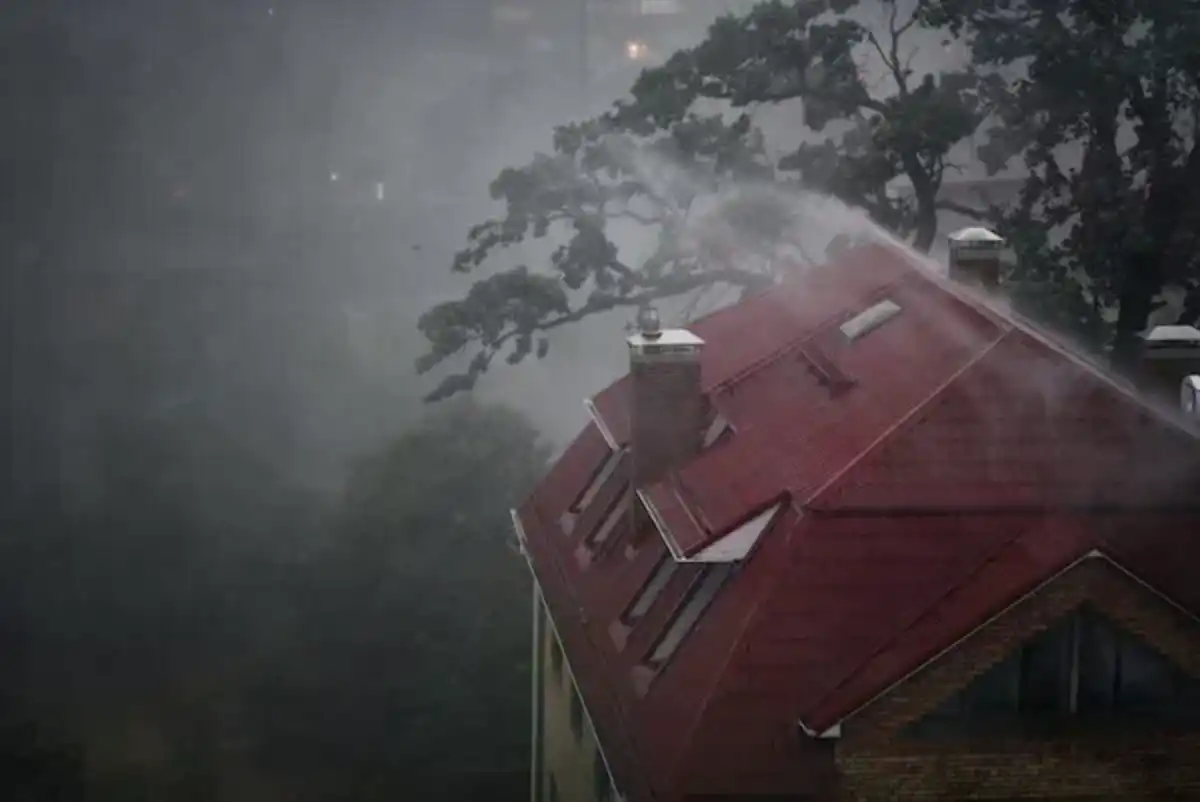States we serve: VA, MD, DC, PA, NC, SC, and WV
Fact or Fiction: Home Hazards Edition
November 28, 2021 · Personal Lines

Have questions?
Contact us today.
Please note: coverage cannot be bound or altered online. A service representative will need to contact you to finalize your request.
When you become a homeowner, there is a pretty steep learning curve. Suddenly, you have complete control over what happens to your home — for worse and for better. Your home doesn’t come with a directory of helpful people to call when you have problems or questions. So, you outsource.
“Outsourcing” your questions is a fantastic idea. You form relationships with new neighbors, establish yourself in the community, and have access to a well of knowledge and experience. However, not everything you hear is completely true.
So, we’re going to play a game of fact or fiction. Let’s examine a few of the most often-repeated ideas and conceptions about five of the most common home hazards and their risks to see if they’re true. The insurance company Travelers lists the top five dangers to your home as water damage, weather-related roof damage, frozen pipe damage, theft, and fire.
WATER DAMAGE
“Eh, I’ll probably never have to deal with water damage. I’m careful!”
FICTION
Every year, one in 50 homeowners files a water damage or freezing claim. Granted, this is only 2% of homeowners, but consider the 79.36 million homeowners in the US. If you do a little bit of math, you find that 2% works out to be approximately 1.58 million people.
In addition, water damage is seven times more likely than fire and five times more likely than theft. So yes, you may not have to deal with water damage, but it’s better to prepare than not.
“I have insurance for a reason. My homeowner’s policy won’t be affected if I file a water damage claim.”
FICTION
It’s vital you take preventive measures to protect your home against water damage. If you repeatedly file water damage claims with your insurer, you may be dropped from your homeowners policy. That said, this is a very extreme case and unlikely to happen.
A far more likely result of filing a water damage claim is an increase in your homeowners premium after your policy renews the following year. The increase is not because your insurer dislikes you either. Instead, the increase in your premium is simply a reflection of your increased risk for future mold or mildew problems resulting from the initial water damage.
“I can preemptively protect my home against water damage.”
FACT
There are so many options available to protect your home against water damage. A good homeowner’s insurance policy is just one way.
Another option is installing and using “smart” water detection devices throughout your home. You can also prevent a lot of damage and headaches by routinely inspecting your plumbing and making sure it’s up to date. Read more about further preventive measures against water damage.
ROOFING DAMAGE FROM WEATHER
“My roof is still new, which means my contractor’s warranty covers it.”
FICTION
While your new roof may still be under warranty, the likelihood is your manufacturer’s warranty explicitly excludes hail damage. So, be sure to check the warranty and confirm you have the proper financial protection in place before you have to worry about roofing damage caused by weather.
“If I don’t see any damage or the damage is minimal, then my roof is fine.”
FICTION
Even if you can’t see any noticeable or severe damage, that doesn’t mean everything is a-okay. Big, expensive problems often start small and unnoticeable. If there has recently been a bout of heavy weather — such as sustained hail, heavy rain, or hurricanes — in your area, consider hiring an expert to inspect your roof, just in case.
The average price for a roof inspection is $215, which may seem costly at first glance. Consider, though, how rarely severe inclement weather happens, and you don’t need an inspector after every rainstorm.
“I don’t live near a coast, so I don’t have to worry about bad weather.”
FICTION
Bad weather can happen anywhere. It is more frequent along coastlines, but hurricane weather patterns and large storms are not restricted to the coast.
For example, look at Cedar City, Utah. The small town is landlocked in the Southern Utah desert. Usually, Cedar City doesn’t receive much rainfall, but the 2021 storm season launched Cedar City into national news as images of the multiple flash floods and the damage they’ve caused have spread. As a result of the torrential weather, the mayors of Cedar City, and its nearby sister city Enoch, both declared a state of emergency.
In a study by Travelers insurance, 51% of all property loss claims from 2009 – 2016 resulted from wind, hail, and other weather-related damage.
FROZEN PIPE DAMAGE
“If one of my pipes freezes, it’s definitely going to burst!”
FICTION
Fortunately, not all pipes burst when they freeze; only some do. However, it can be difficult to tell whether the pipe is broken when it’s still frozen. Not all fractures, cracks, or splits can be seen right away with the naked eye. If you find one of your pipes frozen but without visible damage, the best thing for you is to prevent damage from happening.
You can prevent a frozen pipe from bursting by shutting off water traveling to the frozen line and then opening a faucet associated with the frozen pipe. By opening a faucet, you relieve pressure on the line and give any remaining water space to expand. You can also thaw the frozen line by placing a simple house lamp near the blockage.
“I live in a warm climate, so I don’t have to worry about frozen pipes.”
FICTION
Believe it or not, people who live in warmer climates are at more risk of frozen pipes than those who live in cold temperatures. It may seem counterintuitive at first, but let’s walk through the logic.
People who live in cooler climates are more aware of the risk of frozen pipes. This means they generally are more mindful of the possibility when building or winterizing their homes. On the other hand, if you live in a warm area, you probably aren’t as mindful about potential frozen pipes. In this case, if there were an unexpected cold snap, you would be at a much higher risk of burst pipes.
“I don’t have to call a plumber if I have a frozen pipe.”
FACT & FICTION
Okay, I know, this answer feels like a cop-out, but whether you call a plumber depends on your situation. If the pipe hasn’t burst, then try thawing it first. If you thaw it and find it leaking, then it’s time to pick up the phone. However, if the pipe doesn’t leak, then you’re good to go.
The best way to prevent frozen pipes is by taking simple preventive measures like winterizing your home or ensuring pipes are adequately insulated.
THEFT
“Security systems don’t actually prevent theft; they just alert me when it happens.”
FICTION
Security systems are one of the best measures you can take to protect your home and possessions against theft and burglary. While a lot of crime is opportunistic, criminals will still look for an easier route. A study done by the University of North Carolina found that almost 90% of home burglaries can easily be prevented with very basic defenses.
“My house is more likely to be robbed under cover of the night!”
FICTION
This stereotype has been sensationalized quite a bit by the media. Contrary to what popular television says, your house most likely won’t be broken into in the dead of night. As mentioned above, criminals won’t take more risks than they have to, and breaking into an occupied home in the middle of the night is a huge risk.
Your home is much more likely to be robbed during the middle of the day when nobody is home. Realistically, the places stolen from in the evenings are stores and business buildings because nobody is around.
“Most burglaries are a crime of opportunity.”
FACT
Crimes of opportunity happen because there’s an easy “in.” Maybe you live in a safe neighborhood and don’t have to worry about closing your garage door. It could be you’re running a quick errand and will be right back, so you leave the front door unlocked. You may be working in the driveway and need a drink of water, so you run inside real fast.
It’s small moments like these that pose an excellent opportunity for potential thieves and burglars. The best way to prevent theft and burglary is to follow basic safety procedures, like locking your front door, closing the garage, and putting things away. Read more about protecting your home against burglaries while you’re away.
FIRE
“Fires are rare, so I shouldn’t waste time worrying about them.”
FICTION
Fire is one of the less likely risks you and your home face. That said, they are also one of the most expensive types of homeowners claims filed each year. Just because fires are rarer does not mean it’s a waste of time to think about them and take basic measures to protect against them.
“My home is newer, so my house is more fire resistant.”
FICTION
A couple of decades ago, people had around 17 minutes to evacuate a house fire. Nowadays, in newer homes, you have 3 minutes or less. In this case, the saying “they don’t make things like they used to” holds true. Your home and furniture are made primarily of synthetic and highly flammable materials. Even though older homes may have out-of-date wiring, they are still much more fire–resistant.
“It’s not the fire you need to be wary of; it’s the smoke.”
FACT
While fire is dangerous and scary, smoke is what causes the most damage to people and belongings. Smoke is full of toxic chemicals which are very difficult to get out of textiles — including drapes, rugs, clothes, carpets, furniture, etc. Smoke is also full of fine particles that, when inhaled, can wreak havoc on your lungs, and in extreme situations, can create chronic lung conditions.




